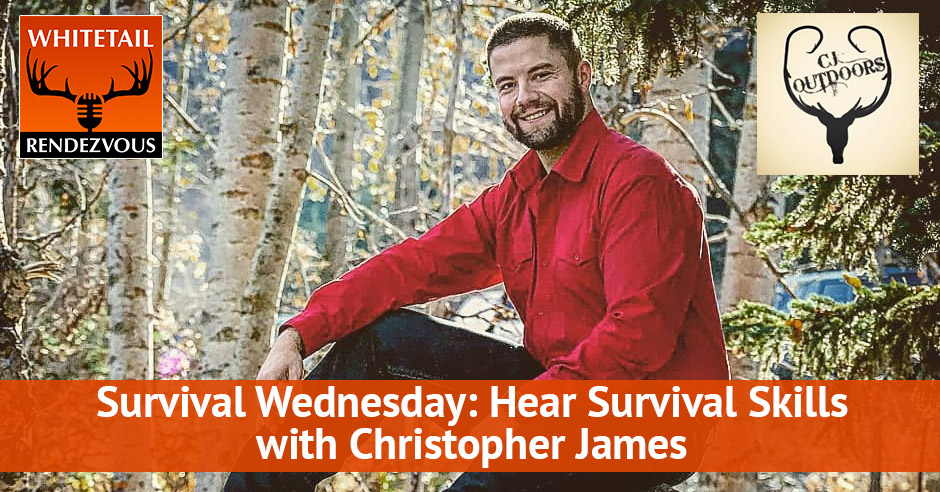
—
Listen to the podcast here:
Survival Wednesday: Hear Survival Skills with Christopher James
I’m with my friend Christopher James. CJ, as they call him, is out of Calgary, Alberta or near there. He lives close to the Canadian Rockies. We’re going to talk about prepping for the 2019 hunting season. CJ, welcome to the show.
Thanks, Bruce, for having me. It’s an honor to once again sit down and chat with you for a little bit about something that we’re both very passionate with. Thanks again for having me on this. For everybody that’s reading now, the 2019 season is coming up. Whether you’re a passionate deer hunter or this is your first time going out, it’s important that you start prepping for the season now. I know out here in Alberta tag draws are going in. It’s right around the corner even though fall seems so far away.
If you think about that in the States here, a lot of tags have already been drawn so guys know what they’re going to get. Colorado where I live, we have leftover tags or as well as over-the-counter tags. One thing I want to tell everybody is that if you ever thought about hunting the Rockies, this is the year to do it because down here in the US, we’ve had more moisture than ever. I’ve got buddies in Arizona that said, “Bruce, you’ve got to come hunt during January. It’s going to be January during a rut. In Arizona, over-the-counter tag, I’ll be looking for a 200-inch deer. There is absolutely no question about it. I’ve got a buddy in Utah and he had a 350 bull out of his hit list. He didn’t get him. He thinks he’s going to be pushing 400.
I believe it. Even up here in Canada, we’ve seen a lot of moisture lately as well. It’s not so much now. We’re dealing with a lot of wildfires, the Alberta summer, as we call it. As of right now and past season, we had a lot of moisture. We’ve been fortunate over the past two winters, they’d been very wet and very heavy snowfalls. We’ve seen a lot of these big boomer bucks that are starting to come out. Even freezer fillers that are quite maybe wall hangers or big does that are coming out as well. It is the time to get out and it is the time to experience the mountains and hopefully fill your tags.
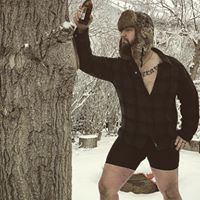 What’s your advice to folks that are saying, “I’m going to get a cow tag for elk or bull tag or whatever I can get? How do these deer hunters that are reading this, what do they need to do to get into the mountains?
What’s your advice to folks that are saying, “I’m going to get a cow tag for elk or bull tag or whatever I can get? How do these deer hunters that are reading this, what do they need to do to get into the mountains?
The first thing when it comes to it is elk hunting is extremely physical. Anytime that you start looking at animals such as an elk if you start looking at doing cross range shooting when you’re looking at bighorn sheep or mountain goats or some of that, the thing you’ve got to factor in is to start getting in shape now. Anytime you start looking at elevation gains, whether it is a mountain or a hill in your area, your legs not only have to be prepared to pull you into that situation but pull the animal that you harvest out of that situation. When I start getting ready for elk or sheep season, I’ll go to the gym and I’ll go on a stair climber.
I will crank that thing up and throw my 40-pound or 40-liter bag on and fill that thing up with weights, start walking and do a treadmill at a high incline. Do the stair climber out of deep incline. That not only will help out with your core stability, which you need when you’re going into a rockier terrain or an elevated terrain, but it will also help with your muscular endurance. It will help with your leg strength. It will help prepare you not only to be in the area and in the zone but also after you take the animal as well. Fitness is the outdoorsman’s number one weapon. It doesn’t matter if you fish, if you hunt, if you camp, if you hike, everybody needs a good level of fitness to go out and experience your own backyard or somebody else’s backyard. Definitely look at getting in shape now.
How many days is a typical elk hunt for you or a nonresident coming into the Rockies?
Whenever I go out for an elk hunt, I usually book off about a week. If I’ve got a big bull, I want to make sure that I take a bull tag. If I’ve got a cow, I’ll make sure I’ll get a cow. I’ll usually spend a week and it’s not just me elk hunting. I’ll go out there and I’ll prepare for next season as well. I won’t take my shot until day four, day five, but I’ll go out there and I’ll watch the migratory periods. I’ll watch where they’re bedding down. I’ll watch how big the herds are that season as opposed to the season prior or the season before that. It all depends on when my tag was drawn. I don’t only go out there for the hunt. I go out there to prepare for the following year as well. I’ll usually look at about a week. I’ll go out into the woods and do my research.
You’re doing the research. You’re doing scouting for the next year then towards the end of your hunt, that’s when you zero in, take your animal and get that cow out of there.
Be a lion outdoors. Share on XI’ll watch their patterns, and that goes for any animal, whitetails and mule. It will be a day or two to hunt. I’ll go out there in the morning, see what I could do, and go back home at night or stay out there for the night and try the following day again. When it comes to the mountains, that’s when I’m dealing with sheep, when I’m dealing with moose, when I’m going for bear, elk. Whenever I’m dealing with some of these elevated location animals, I’ll usually take a little bit longer and make sure that I’m able to get a proper shot off. Your ballistics are a little bit different when you’re dealing with the mountains. You’ve got to factor in some of the range, wind velocity and bullet drop you’re dealing with if you go in with a long gun. It’s the same deal with the bow. You’ve got to factor in the different wind pressures, the different air pressures. I made sure that when I go out there, I do it right. I watch what the animals could tell me because then I’m able to read that animal and make sure that I make the most humane shot as well as a good shot was given that the trend that they’re showing me.
When you do put an elk down, how long is your pack out?
It all depends on what zone I’m in. What I’ll do is I’ll quarter the animal out. It’s usually close enough to camp. I’ll have it clawed or I’ll have someone on those to help rip down into my truck. I’ll quarter the animal out. I’ll gut it out. I’ll cape it and I’ll do everything that I can, but it all depends on how far away I am camp. I’ll break that animal down first and then walk my way out.
Is that an average of a mile, five miles?
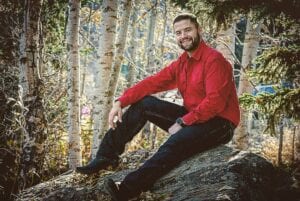 It all depends on the zone. In Alberta, we got elk everywhere. We’ve had elk in the plains. We’ve had elk in the Rockies. On average, we’ll say between a mile to three miles.
It all depends on the zone. In Alberta, we got elk everywhere. We’ve had elk in the plains. We’ve had elk in the Rockies. On average, we’ll say between a mile to three miles.
Sometimes people have to get them out with horses because they’re backing five miles or they’re going to piggyback and drop them off. Go back another load and do that cycle.
In my sheep hunts, I’ll pack her. I’ll go out there with horses and all that. It’s a little bit easier for me on that because not only do I have to most of the times shoot cross range, I want to make sure that I’m over there on something a little bit more stable. I’ll pack hunt with that, but I won’t do it with an elk. I’ll go on foot to that.
Do you hunt whitetails and mule deer?
I do.
Was that around your ranch or is that in different places?
Fitness is the outdoorsman's number one weapon. Share on XWe got mule deal a lot around the ranch. We’ve got good trophy whitetail deer up in Northern Alberta. I’ll a lot of times go up north, but we’ve got some good deer down in my area, down around the ranch. We’ve got a lot of good transitions. We’ve got a lot of good waterways down here in Alberta, especially in my neck of the woods. We’ve got the Bow River. We’ve got the Elbow River and Sheep River. We’ve got a lot of good cover for a lot of these deer where we get a lot of good transition and bed down points. I’ll do a lot of my deer hunting down and around here.
If you’ve got to focus on some deer near the ranch, not going up towards the Peace River. Do you go by the Peace River?
You can go up toward Peace up around Grand Prairie. There are a lot of good things up around there. Mayerthorpe, there is a lot of good deer and moose up in that area.
That’s a couple of hundred miles from where you are.
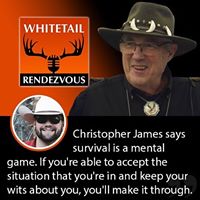 It’s about a day drive.
It’s about a day drive.
Let’s go back to building your hit list. You’ve got to hunt locally. You’re going to target a couple of bucks. How do you do that?
If I’m going to go after a couple of bucks, I want to make sure that I got all my ducks in a row especially if I’m going for some good wall hangers as well as some good meat. I definitely want to look out for the big boomers. In around the first to the second week of June, I’ll start scouting. I’ll start seeing how the animal is starting to look. What their sizes are looking like, what they’re feeding on and what they’re going to go again and tell me. From there, I’ll see if I could find a lot of scrapes. I’ll see if I can find any bed down zones. I’ll see if I could find an abundance of does in the area because where there are does, there will be bucks. I try and go out there and study the landscape. I do that a lot. I killed two birds with one stone.
A lot of the times I’ll do that on my way into a fishing hole or when I’m sitting there spinning or fly fishing, I try and go off grid as much as I can. I don’t like to do a whole lot of urban fishing. I’ll try and disappear. I’ll watch, listen, see and hear anything the wild is going to tell me. All of us deer hunters or anybody that has gone out there knows that a twig breaking could either be that record buck that you were looking for. It could be some stupid squirrel that’s going to scurry across the trees. I definitely become one with the environment. See what they’re telling me and see what the signs are there. I start scouting and preparing for the fall starting here within the next week or two.
Where you are, I know there’s a lot of agricultural. Do you put in food plots as well as the big fields?
At the ranch, we put down food plots. We do a lot of grain. We do a lot of corn. They’re for the specifics of bringing in deer. Now for us, it’s around the ranch. It’s a lot of mule deer but we’ve got to be careful with our predation on that because we’ve got a lot of cougars in the area, a ton of wolves and a lot of coyotes. We vary our food plot. Every second year, every third year, we’ll put it in a food plot to keep the deer coming back. It’s not a routine thing because we have cattle out there. The last thing we want to do is pull in a lot more predators when we don’t need to.
For a lot of people, hunting is a therapeutic activity. Share on XThat’s an interesting thing. I didn’t think about that.
That’s where the family makes its money on that end. We don’t want to say goodbye to a lot of our Blue Chip Bulls. It’s a cattle farm, it’s not a dairy farm so we don’t want to lose meat to a predator as opposed to meat could be on your table, my table or anybody else’s table.
It could put gas or diesel in the trucks too.
You got it. If I don’t have something to fire up the old Dodge, I can’t get to where I want to be.
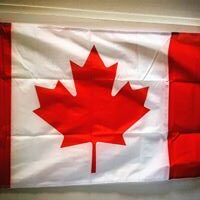 Do you hunt off the ground when you’re hunting whitetails?
Do you hunt off the ground when you’re hunting whitetails?
If I’m bow hunting, I’d definitely go up into a blind. I find it’s a lot easier. That goes for almost anything whether it’s whitetails or it’s mule even bear. A lot of the times, I’ll go up in a tree blind. I could do the spot and stalk, but it’s not one of my fortes. I’ll do ground blinds for birds. I’ll do a ground blind for the odd time. I’ll do ground blind for sheep, cows or something along those lines. It’s pretty rare I’ll do ground blind for any deer. A lot of the times I’ll go up in especially if I’m bow hunting up in a tree stand, but if I’m pulling up my long guns, I’ll range them in. I’ll spot and stalk on that. If I’m grabbing my bow, I’ll be up in there for sure.
Do you have ladders stands or hang-ons?
I have hang-ons. I had the ladder stands, but I find the hang-on that it works for me and my rigging when I get up there than something else.
What broadheads do you shoot?
I vary on that. I’m not a brand whore by any stretch. It all depends on what I’m shooting or this season. I ended up grabbing some Beman carbon arrows, 400 grains. I’m going to be looking forward to shooting these thinking I’m going with what I’m going out on at 320 on that. If I could make it maybe a 500, 520-grain arrow. It’s up in the air. I see what the environment is like, where I’m going to be shooting, where I get tags because obviously the heavier the arrow, you’ve got to factor that in. The lighter the arrow, you’ve got to factor that in. It all depends on where I’m going and what I’m shooting. I’ll fly by night. I’m screwy in that regard. I’ll do a whole ton of research up until the end of the week before. I go, “That looks like that might work.” Go out there and give it a go.
Hunting is a sense of family. Hunting is a sense of comradery. Share on XI’ve been doing this for so long, it’s one of those. I’ve been fortunate enough to be able to pick a few of the go-tos and it’s the same thing as fishing. It’s the same thing with anything. I’ll do a whole bunch of research and get everything ready. I’ll go out there and my plan going in might be completely different given on the conditions, or we might have a big snowfall or a wind storm where you’ve got to shoot something a little bit heavier. I don’t make those decisions on what I’m shooting until I get out there.
How hard is it for nonresidents to hunt Canada for a deer?
For nonresidents, as long as you’re with a resident, in Alberta specifically, you do have to submit a nonresident tag. It has to be for a three-day, one-day or seven-day. You can submit for that. As long as you’re with a resident and it doesn’t specifically have to be a guide, but as long as you’re with somebody who is a local and who has tags as well as a hunter card. In Alberta, for us to draw tags, there are a couple of different things. Alberta, you have to take a Hunter Education Course as well as you’d have to have a WIN card or Wildlife Identification. We need both of those to be able to submit for tags. For nonresidents, if they want to come up to Alberta, and I welcome anybody interested in coming up, hunt in Alberta and see what it’s all about.
I know Cam Hanes is in Northern Alberta doing a bear hunt. He and Joe Rogan come down every spring and they’ll go up the same spot. They’ll do bear hunts. I definitely welcome anybody who wants to come up to Alberta and do a hunt to get in touch with me. I’d be more than happy to help you out and guide you along. It doesn’t have to be with me. I can point you in the right directions to the right guides. Overall, as long as you’re with somebody who is a resident, who has a WIN and who has a hunter education card, you could submit for your tags as a nonresident.
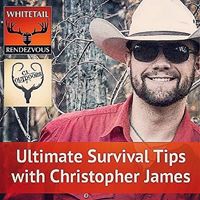 Do you have to do that before you get up there or you can do that once you get there?
Do you have to do that before you get up there or you can do that once you get there?
You can do it once you’re out there. I would definitely recommend they’ll just do a rigmarole especially if you’re coming in from the States where you’re bringing in your bows or you are transporting a firearm or something like that. I would recommend getting by the forest. If you do get stopped by the Canadian border, you’re able to show them and say, “I am hunting in Alberta. These are the reasons that I have.” As opposed to crossing the border without having those proof of identification of what you’re doing out here.
Let’s talk about weather temperatures in October, November and December?
In Alberta, specifically with us being about 30 minutes away from the Rocky Mountains from where I am. Other locations, obviously it’s a little bit more. Alberta is a wonderful climate and the fact that we have a desert and bad lines on one side with prairies and we have the Rocky Mountains that sandwich it over on the other end. It does vary as to where you’re at. For myself specifically where I am, October starts to get a little bit of a nip in the air. We start seeing temperatures dip around 32 Fahrenheit to zero in Celsius. We definitely start seeing the temperature start to change. We don’t see a whole lot of snowfall occur until about mid-December.
Once January hits, that’s where we get a lot of this. The difference in Alberta though is with us being the province beside British Columbia, we got a thing called Chinooks. That is the warm coastal winds coming off the coast of British Columbia starting to hit the cold winds of the Rocky Mountains and the frozen tundra that is Alberta. The cold winds make way for a lot of the hot wind. Even in Alberta, it could be February and we still see temperatures and sun up in the 20 to 25 degrees Celsius. It could be smack dab in the middle.
We get probably about once a month where the pressure changes. All the snow melts, a lot of the green starts to come out. The pressures change dramatically because you are dealing with the hot front from the coast and the cold front from the north. Alberta is a weird environment when it comes to that. We’re also extremely fortunate that we are able to have a lot of the boreal forest up in our area. We still get a lot of green space. We still get a lot of animal activity because the season and the snow don’t start to fall until a little bit later.
That’s a little bit different. I know the Chinooks. When I used to ski, you’d run into that. All of a sudden in the winter, the Chinooks come in and it’s like skiing in spring. We looked at physical fitness. Let’s talk about the mental attitude of hunting and what you have to take on the mountains because the mountains beat you down every day, the physicality of it. You get the mental aspect and that scene, that elk you know they’re there, but you wouldn’t be hunting there. Let’s talk about that.
For a lot of us, hunting is therapeutic. If you’ve tuned in to a lot about the episodes that I’ve done with Bruce here in the past, you know my story. If not, I recommend going back to WhitetailRendezvous.com and checking my story as well as the stories of others. There have been a lot of good stories about mental toughness. Hunting for us, a lot of it is therapeutic. It’s a way to get back to our ancestry. It’s a way to connect with nature. It’s a way to fill our freezers. The thing that a lot of us don’t understand is you could be the greatest hunter, the greatest fisherman, the greatest scout, the greatest guide. You are going to get skunked. Without a doubt, you are going to have days where you do not see an animal, where you take a shot and you miss, where things aren’t clicking.
The unfortunate thing with doing all your prep work, especially us as hunters, we’re airing out our clothing a week or two before, get all the smell out of it and get it going in there. All the money that we spend and all the research that we do, everything that we do to go out there and to be eating tag soup at the end of it is incredibly disheartening. The nice thing with hunting is it’s not always the animal that you are going to be chasing. Hunting is a brotherhood. Hunting is a family. Whether you go up there hunting by yourself or with your dad or brother or best friend or you have a bunch of friends that all get together once a year, every year in the same spot and hit deer camp.
Hunting is a sense of family. Hunting is a sense of camaraderie. It’s not always going to be about the animal that you take. It’s not always going to be about the new mount that you’re going to have done. It’s about the experience. With every time that you miss, every time that you do not see an animal, that’s an opportunity to learn from it to grow. Sometimes you could be sitting in the same stand three days in a row. You could be checking the trail cams for the past few months and see the animals. When the day comes that you’re out there, something might’ve spooked the animal. They might’ve picked up your scent. They might have done something to be spooked. There might be a predator in the area that has them all bedding down or hiding.
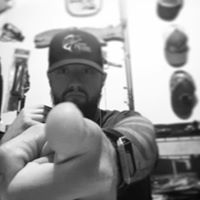 You’re not always going to win against the wild and that’s not in the pursuit of meat. That’s also in the pursuit of self. There are a lot of times that the mountains will whoop you. The prairies will beat you. The water, even if you’re going fishing. I can’t tell you the number of times I’ve gone out there. I’ve been all excited. I’ve got a new rod and reel. I’m ready to go. You see all the advertisements saying, “Guaranteed to catch fish.” You’re guaranteed to Pope & Young, new record holders and all this. It all comes down to the person. I could go up there to the waters, and I’d throw bait after bait and lure after the lure, nothing hits. It doesn’t mean that the animals aren’t there. It means I might be doing something wrong. I might be doing the wrong presentation. It’s so much but it’s an opportunity to embrace the experience and chase the feeling of self-reliance, chase the camaraderie, chase the pride that comes with being a steward of the outdoors and understanding that you’re going to lose.
You’re not always going to win against the wild and that’s not in the pursuit of meat. That’s also in the pursuit of self. There are a lot of times that the mountains will whoop you. The prairies will beat you. The water, even if you’re going fishing. I can’t tell you the number of times I’ve gone out there. I’ve been all excited. I’ve got a new rod and reel. I’m ready to go. You see all the advertisements saying, “Guaranteed to catch fish.” You’re guaranteed to Pope & Young, new record holders and all this. It all comes down to the person. I could go up there to the waters, and I’d throw bait after bait and lure after the lure, nothing hits. It doesn’t mean that the animals aren’t there. It means I might be doing something wrong. I might be doing the wrong presentation. It’s so much but it’s an opportunity to embrace the experience and chase the feeling of self-reliance, chase the camaraderie, chase the pride that comes with being a steward of the outdoors and understanding that you’re going to lose.
Once you get past that, it’s one of the most rewarding experiences of your life when you take that animal loss after loss. It’s exhilarating. I’ve seen hunters that had been hunting for many years that not only get beat by an animal but also still shed a tear and still get all giddy with their 100th plus animal as if it was their first. They’ve been hunting for many years. Every single time, it’s the same feeling of excitement. We as hunters and we as outdoors people need to remember that feeling. That is the passion that’s going to keep us going out there. That excitement and that yeah feeling and it’s tough to explain unless you feel it. Bruce, you could chime in on this one because I know you felt this one many times.
You do the preparation and you do research. You get out there, mix it up and get your butt kicked but that’s part of the hunting journey. Everything else that CJ brought up, camaraderie and I call it the journey. CJ and I did a Campfire, go back and read that at the Whitetail Rendezvous. You’re going to hear from Tom Opre. A lot of people know him. He runs the Extreme Huntress contest. We had a lot of people. Having said that, why we hunt isn’t to put an animal on the wall. I’ve killed a few deer, elk and everything else, but that was part of the journey. I went there. That was the goal. That was the end game. That’s why I travel to these places. In the end, it’s the journey. That’s what the show has turned into is it’s a journey. CJ and I have developed a friendship because of that. It’s a beautiful thing. There’s no question about it. The things we shared, the stories we shared. I thank the hundreds of thousands of people that have followed the show and hundreds of guests that have been on the show. When we think about how you get the hit list, you’re in the season, would you rather take meat for the freezer or something for the wall?
I’m a freezer filler. It’s been something that I’ve always done. If I have the opportunity to take a trophy and I have submitted for trophies. There’s something about going out there and seeing this big boomer, eight-pointer that is mature and saying, “I want the reminder of this hunt.” I’ll go for it but for me, it doesn’t always have to be this big bruiser wall hanger buck. I don’t need to go after that or a big bull. Is it nice to have? For sure. Are those memories there? Absolutely. However, you could still eat the trophy, but I’ll do a lot of maybe the older ones that are not going to produce anymore, that is going to end up getting pushed out of the herd, to begin with.
I will fill the freezers. I do a lot of hunting. For Alberta, a lot of the times I’ll put it in a general tag that allows me to get three whitetail or three mule deer. I’ll go out there and if I filled the three tags, that’s great. I’ll make a lot of donations for it. I know in the several months afterward from taking that animal, I’m not going to go through all of those three deer. Can I do it? Yeah, but to me that’s selfish. Hunting, it’s not only the journey for yourself, but it’s the journey for others. Whether that’s introducing somebody to wild game, whether that’s sharing your quarry with people that are less fortunate, donating an animal to say a homeless shelter or food bank or something like that and giving it back to people that could use it.
It’s not only I have to go out there and I had this great experience and I was able to feed myself, my family and maybe take somebody else out hunting. I’ve been able to share in that success with people that might not be as fortunate or as experienced or had the same means to go out and do it themselves. I try and give back to not only nature through conservation efforts, doing instruction and doing shows like this and the campfire. I know we’ve got on conservation, a big part in that Campfire series. I try and give back to the wild as much as it’s provided to me. I try and provide to your community as well. In that Campfire, hunting has a lot of negative connotation. We see a lot of people say you’re a monster. “What did that animal do to you? How’d you like it if somebody came in and shot your family or something like that?” We’re always going to experience that. If we’re able to, as hunters, show communities that we are not the blood lust, big bad wolves out there shooting animals for the sake of shooting animals, that’ll go a long way for our sport. That’ll go a long way for the next generation.
What’s in store for you this summer? Are you working the ranch?
I got a lot of stuff going on this summer. I had a welcoming experience where I was able to experience something brand new. I can’t share too much about this, but I was away for a little while doing a little bit of adventure traveling. For your audience, definitely stay tuned and welcome you to follow both of our pages because both of us will be doing a little special on that one once I’m able to talk a little bit more about that. I was able to do a lot of that. I’m trying to get into a lot of these conservation schools that we have out here done a lot of teaching. We’re trying to get out there and getting a lot of people ready for hunting season. Taken some people out fishing a lot of the time, trying to get a wilderness school that I’m looking at putting together. That’s still in its infancy, but that’ll do everything from plant identification to animal tracks to hunting, to shooting, to fishing to survival.
I’m trying to get that in the works. That’s still a couple of years out and pretty much getting ready for the upcoming fall. It’s going to be a record year for animals out in the Rockies. If you guys live outside of the Rocky Mountains, definitely reach out and see if you have the opportunity to get into one of our neck of the woods. Hopefully, you guys have some good luck out there in that season. A lot of it is just the medial day-to-day, but a lot of things on the go of doing a lot more writing and everything too. I’m keeping as busy as I can.
CJ, it’s always a pleasure. Everyone to make a trip out west, get an over-the-counter tag, check the states that you still can apply. I can’t tell you off the top of my head. I know Nevada just had their draw. I’m waiting to find out if I get my moose tag, elk tag, deer tag and animal tag. I haven’t gotten notified yet. I haven’t seen money come out of my account. It does look good for me. Needless to say, Colorado does have over-the-counter tags. Arizona in January, you can go hunt mule deer during the rut in Arizona with an over-the-counter tag. I’ll be heading there. I’m targeting large deer because 160, 170 deer will be pushed from 180, 190 and 200.
This is the time to do it. Everybody else in the outdoor world is talking about it. You can’t go on a social media page without somebody saying, “Look what the bulls are already doing.” I was five miles from my house on the east side of I-25, which is East the Rockies. There was a rather substantial bull and I could see his horns from 300 yards away, 400 yards away. It’s already grown. It’s going to be an incredible season. With that, I’ll end this session of the show. CJ, it’s always a pleasure. We’ll catch up and make our announcement.
Thanks again for having me. I’m planning on making a canoe trip in Wyoming at the beginning of August. If your audience is out there, if you want to meet up or Bruce or yourself, I’ll be down in Wyoming for a few days at the beginning of August. Shoot me a message.
What part?
I haven’t quite decided that part quite yet, but I think I’m going to have canoe trips. I’m trying to get a couple of buddies out there to do a four-day canoe with me. If you’re interested, shoot me a message.
Get ahold of my friend, Cody Ewing in Alta, Wyoming. Go on Instagram, Cody Ewing, and tell him you’re a buddy of mine. I won’t make a canoe trip, but I’ll make raft trips.
We’re looking at doing one of those. We’re thinking in October as well. If that’s the case, I’ll let you know there, Bruce, if we do a bit of a Whitetail Rendezvous meet up down there.
That would be good. I’ll talk to you soon.
Important Links:
- Christopher James
- Beman
- Campfire – Past episode
- Extreme Huntress
- Cody Ewing
- https://www.Facebook.com/bealionoutdoors/videos/423294554796062/
- https://www.Facebook.com/bealionoutdoors/
About Christopher James
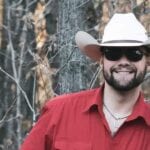 CJ is a kinesiologist by training, Public Safety Agent by profession, but an outdoorsman by birth – he has a passion for ALL things wild since the day he first came into the world.
CJ is a kinesiologist by training, Public Safety Agent by profession, but an outdoorsman by birth – he has a passion for ALL things wild since the day he first came into the world.